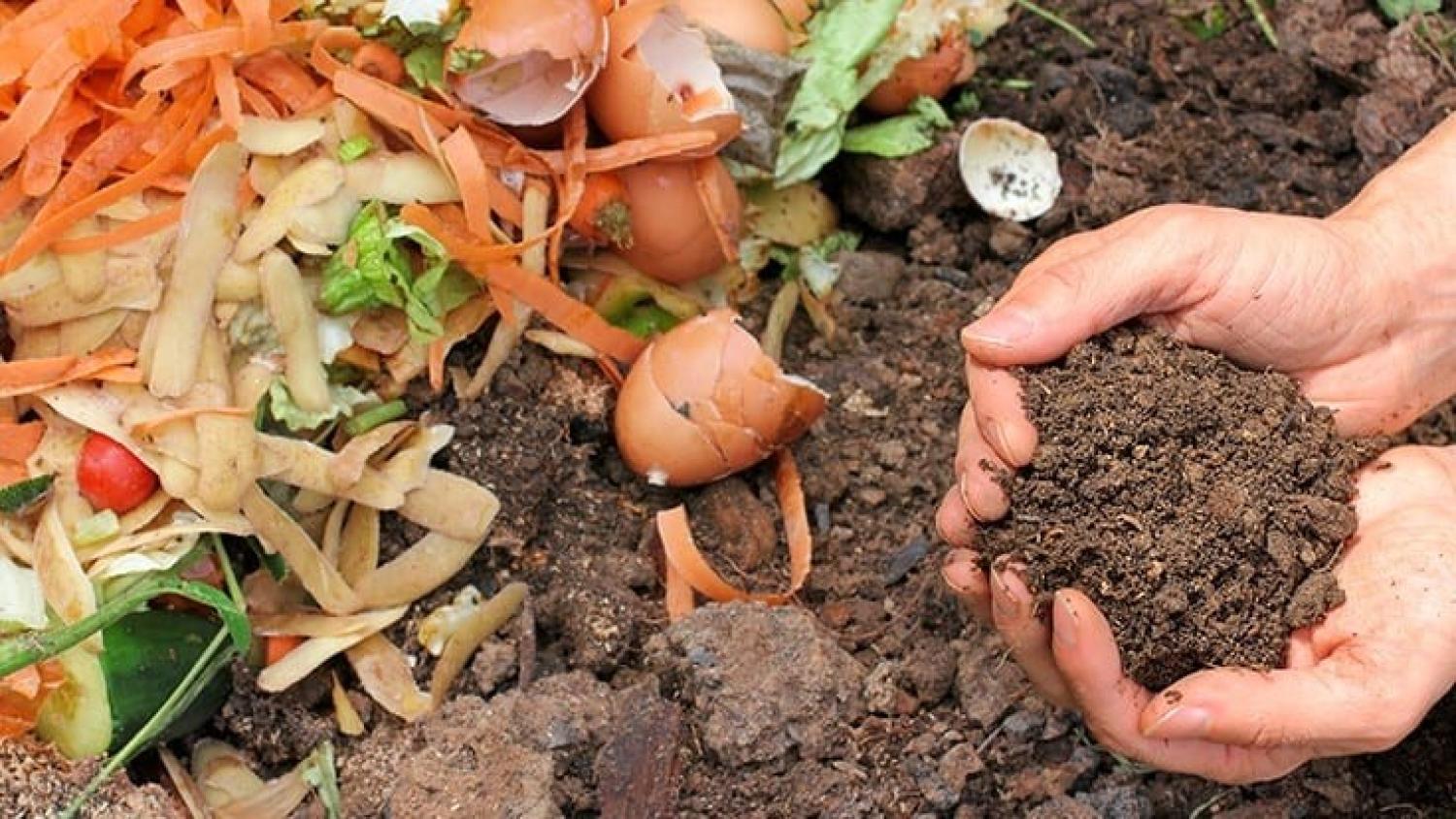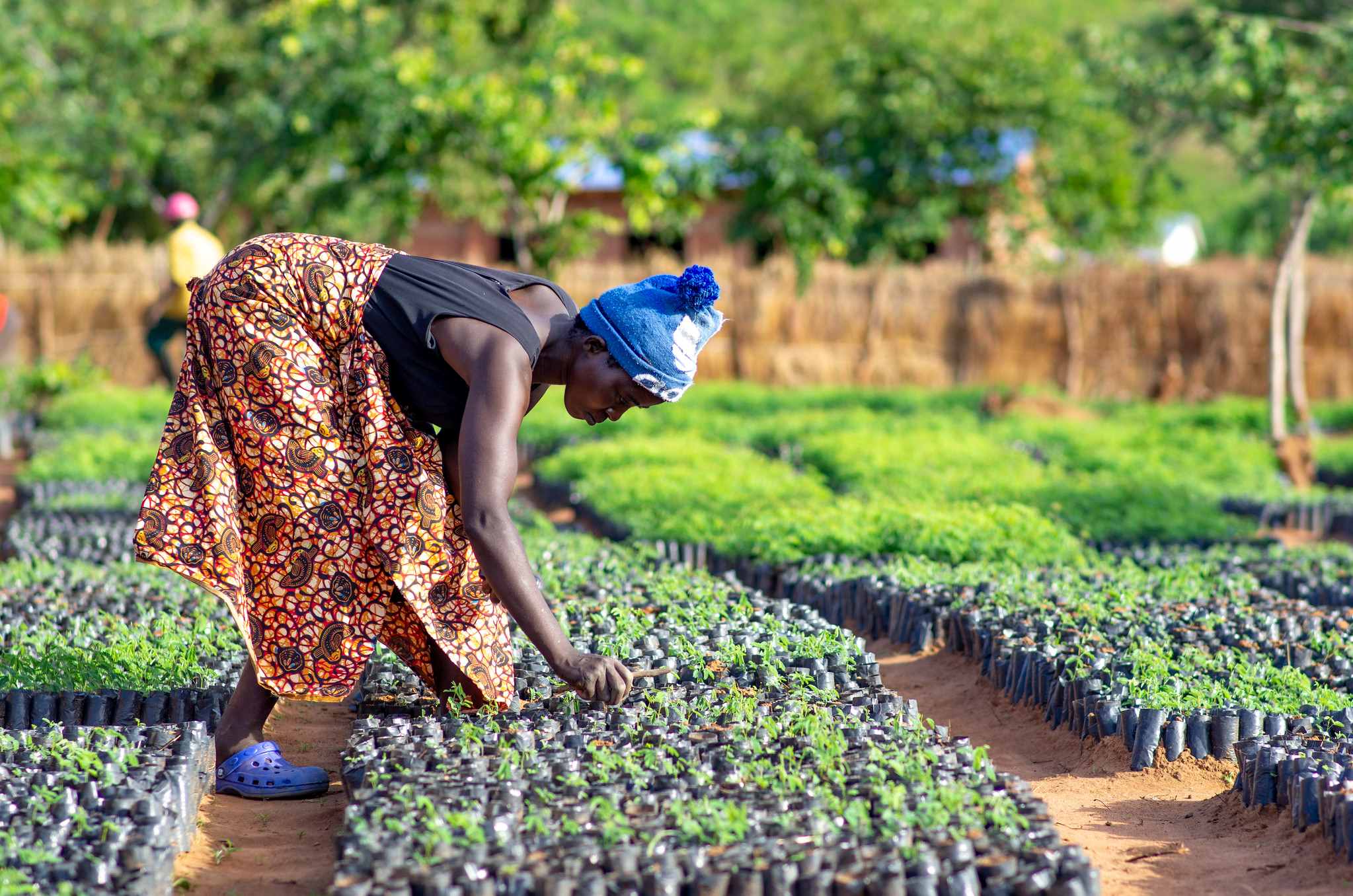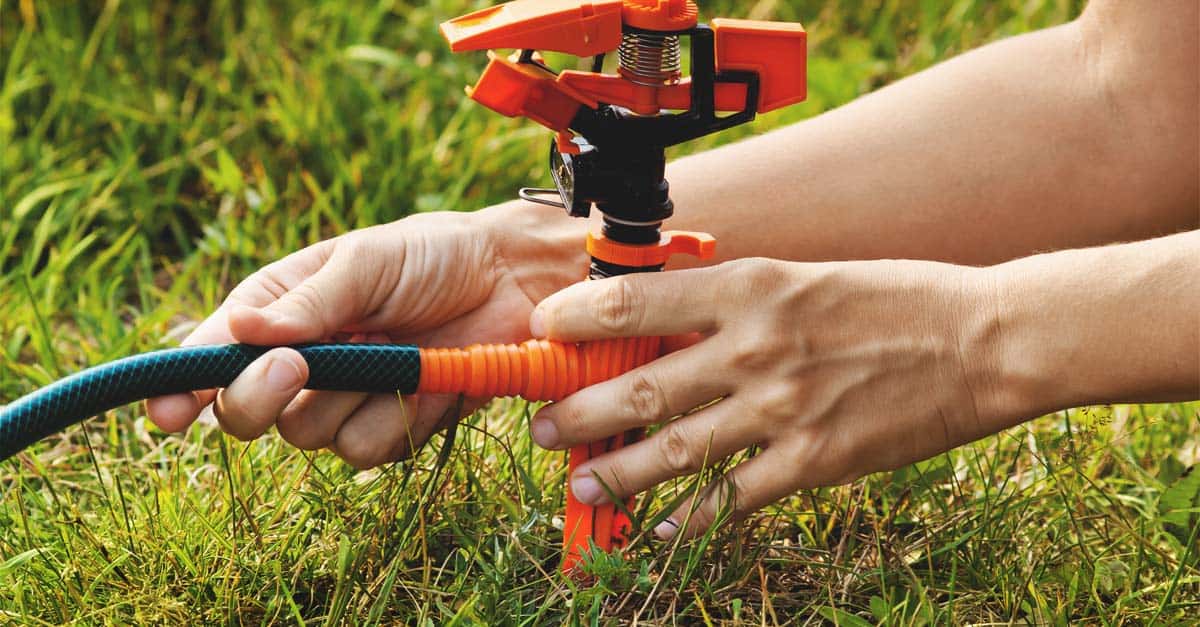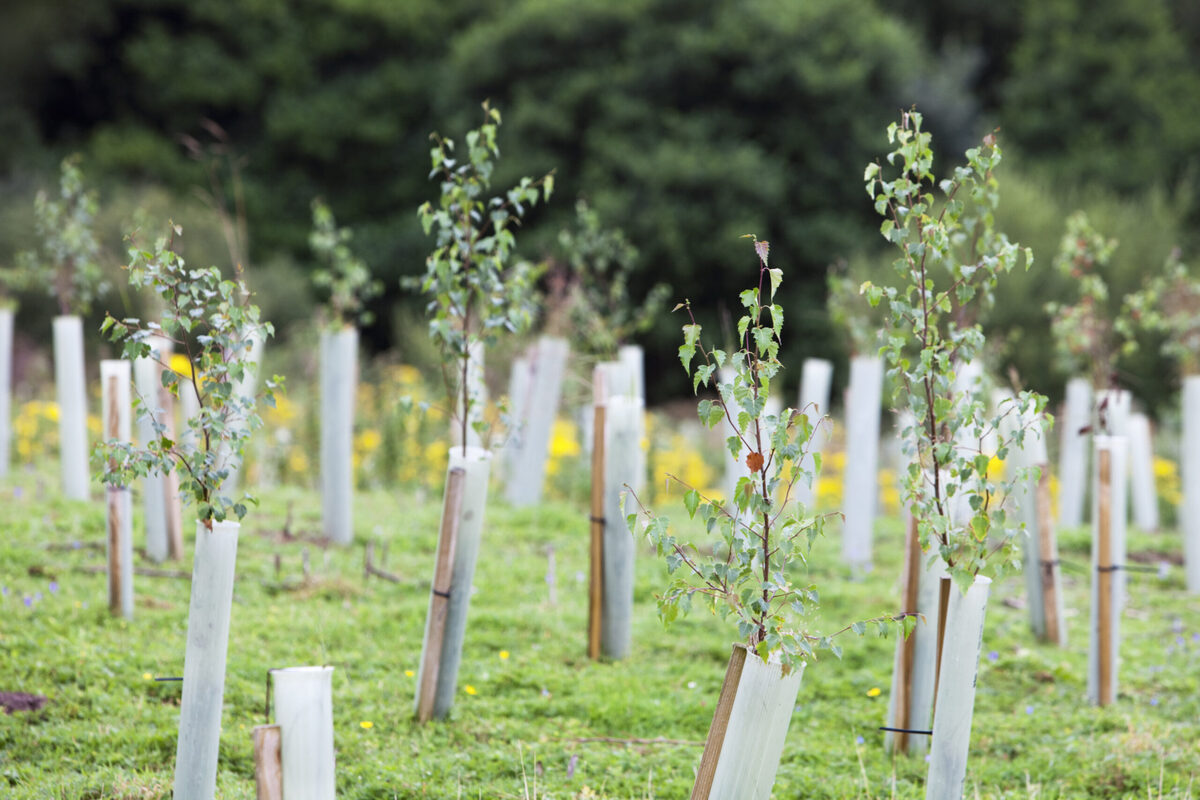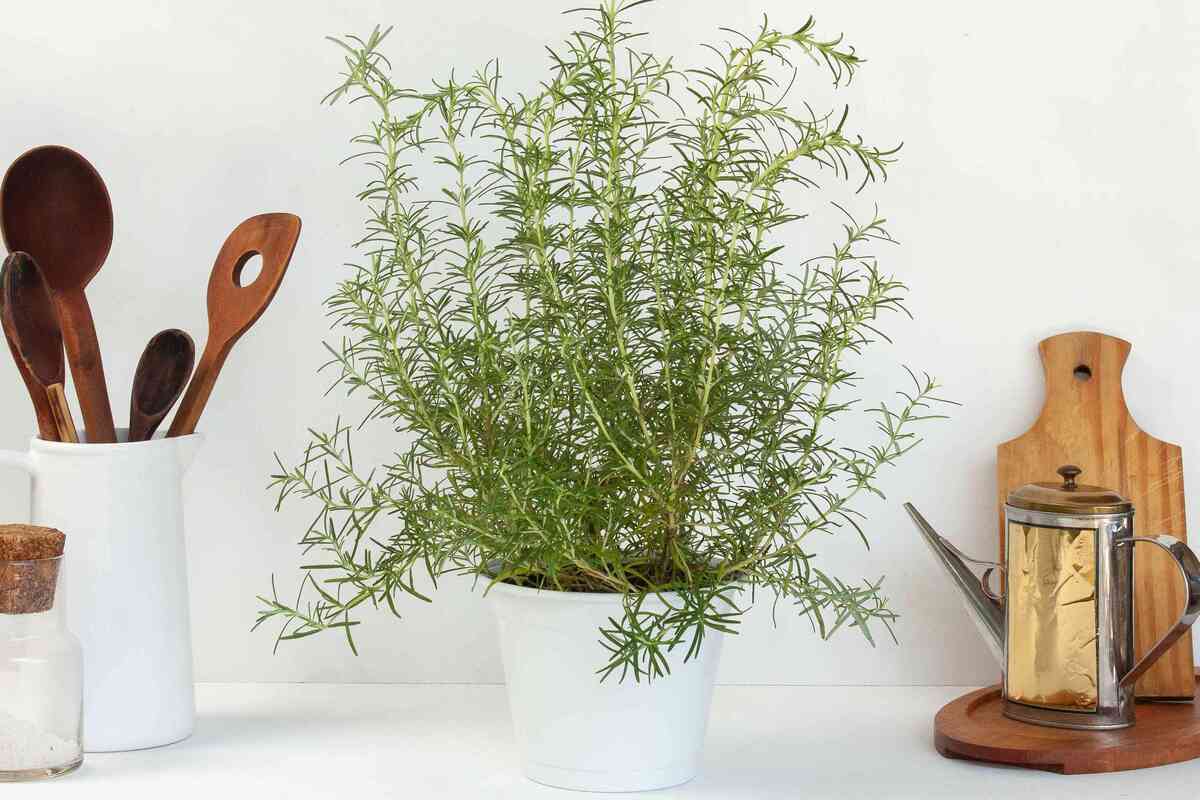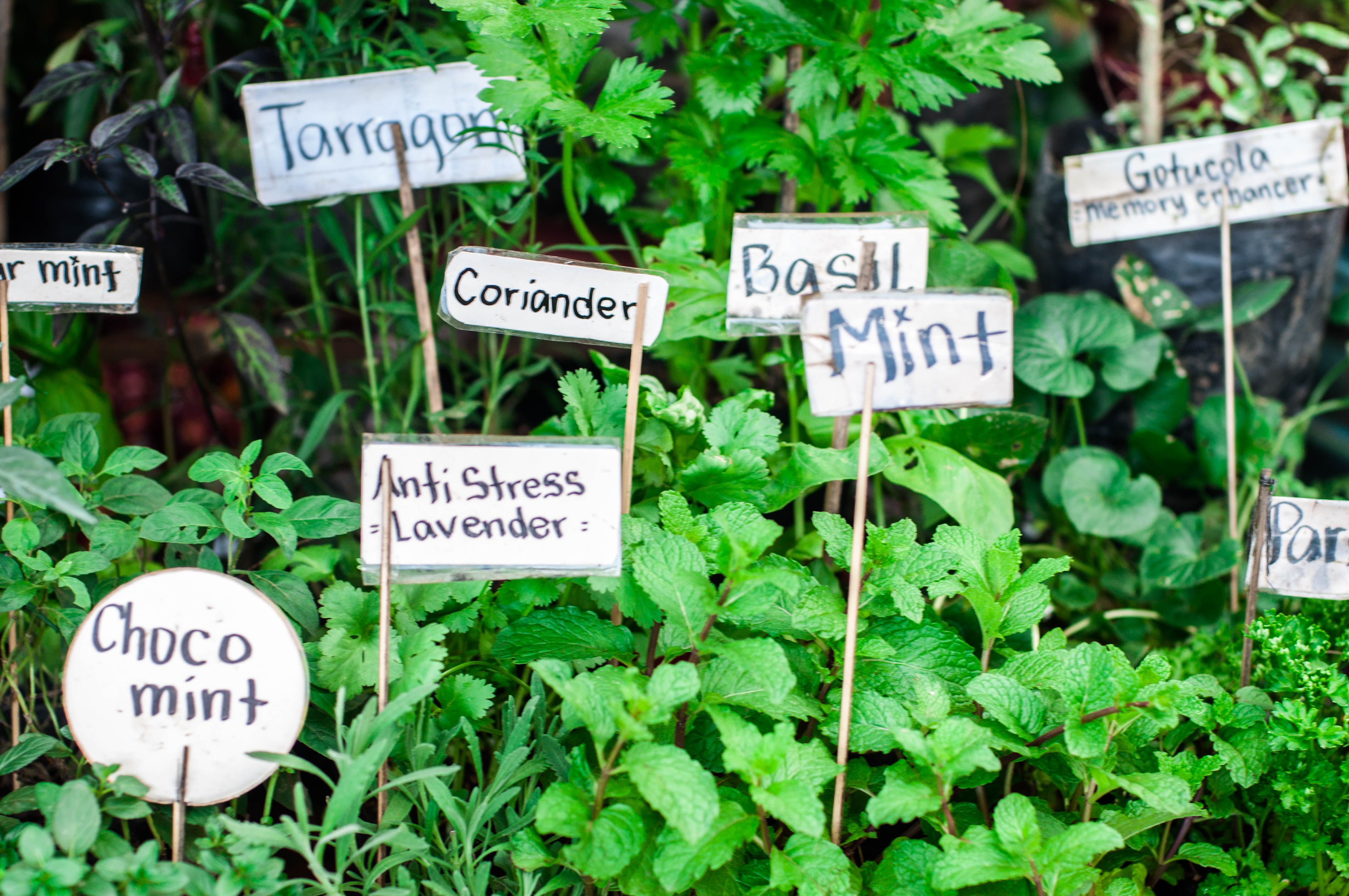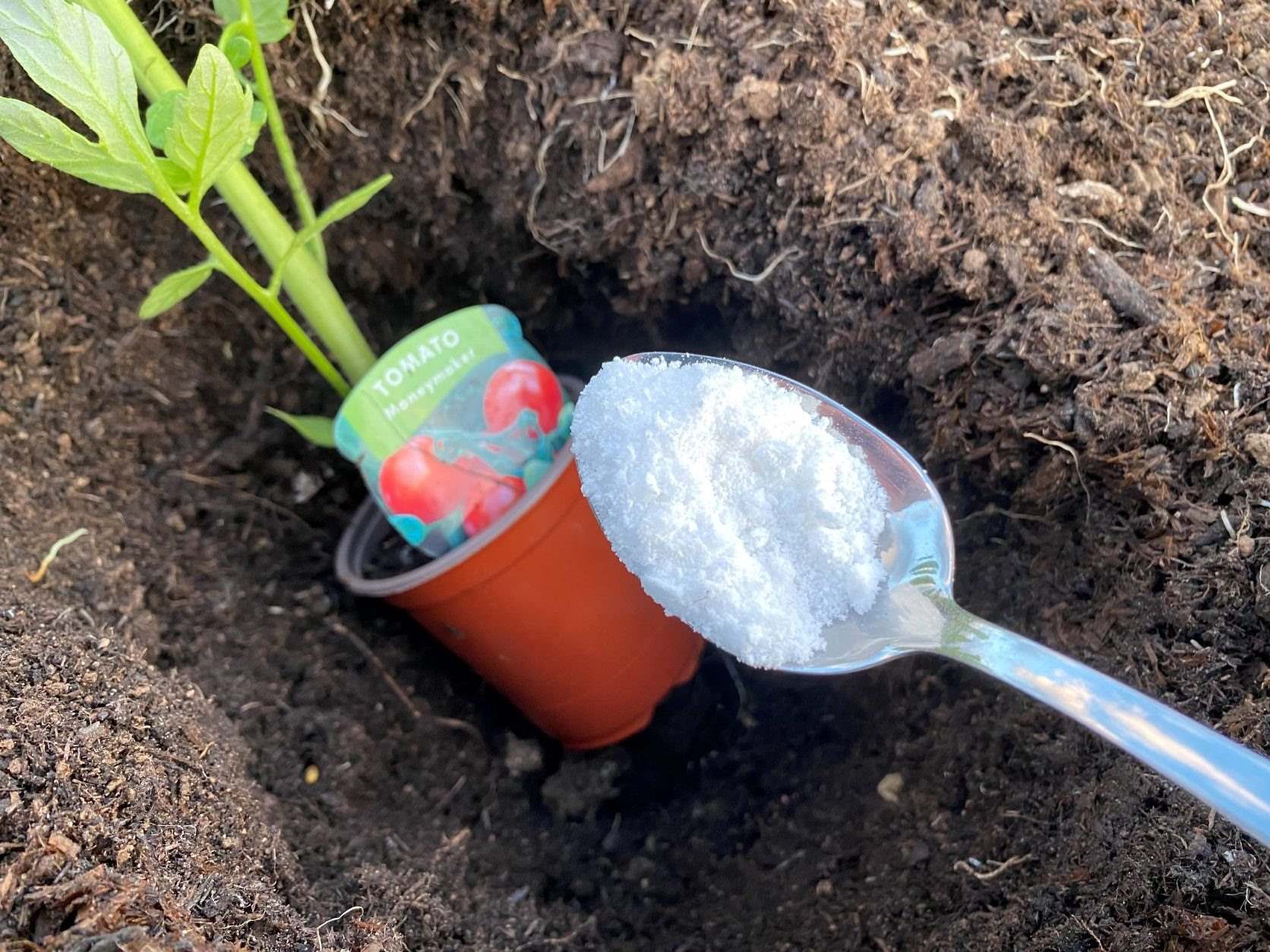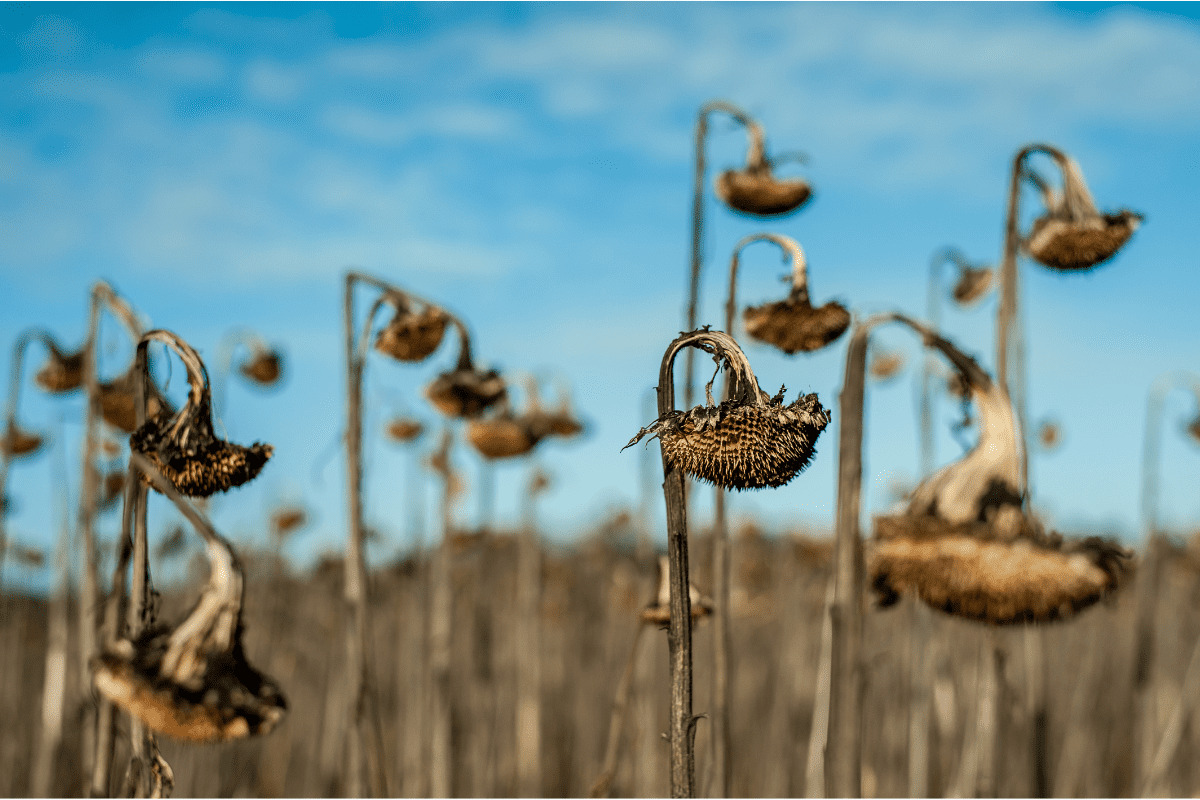Home>Gardening Tips and Tricks>Eco-Friendly Gardening>How Do You Know When Your Compost Is Ready
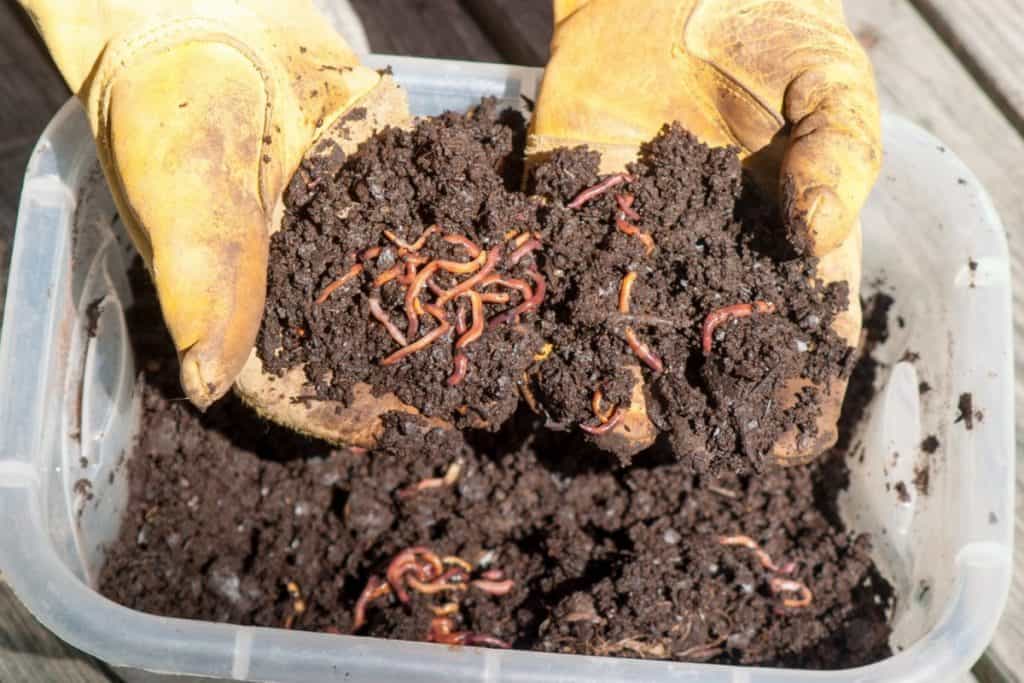

Eco-Friendly Gardening
How Do You Know When Your Compost Is Ready
Modified: January 22, 2024
Discover the signs of ready compost for eco-friendly gardening. Learn how to know when your compost is fully decomposed and ready to use.
(Many of the links in this article redirect to a specific reviewed product. Your purchase of these products through affiliate links helps to generate commission for Chicagolandgardening.com, at no extra cost. Learn more)
Table of Contents
- Introduction
- What is compost?
- Why is composting important?
- What are the benefits of using compost?
- What can you compost?
- How does composting work?
- Factors that determine compost readiness
- Signs that your compost is ready
- Testing the readiness of your compost
- Harvesting and using your finished compost
- Common mistakes to avoid in composting
- Troubleshooting common composting problems
- Conclusion
Introduction
Welcome to the world of eco-friendly gardening! One of the key elements of sustainable gardening practices is composting. Whether you have a small backyard garden or a larger plot of land, composting is a simple and effective way to boost the health of your plants while reducing waste.
Compost is often referred to as “black gold” in the gardening community, and for good reason. It is a nutrient-rich, organic material that is created through the natural decomposition of organic matter. By recycling kitchen scraps, yard waste, and other organic materials, you can harness the power of nature to create a valuable resource for your garden.
Composting is not only good for your plants, but it also plays a crucial role in environmental conservation. When organic matter ends up in landfills, it decomposes anaerobically, producing methane, a potent greenhouse gas. By diverting organic waste from landfills and instead turning it into compost, you are significantly reducing greenhouse gas emissions and mitigating the environmental impact.
In this comprehensive guide, we will explore the ins and outs of composting, including the benefits of using compost, what materials can and cannot be composted, how composting works, and signs that indicate your compost is ready for use. Additionally, we will provide tips on testing the readiness of your compost, harvesting and using the finished product, as well as common mistakes to avoid and troubleshooting techniques for common composting problems.
Whether you are a seasoned gardener looking to improve your sustainable practices or a beginner just starting out, this article is designed to provide you with the knowledge and tools you need to create and utilize nutrient-rich compost in your garden. So, let’s dig in and discover the wonderful world of composting!
What is compost?
Compost is a natural and valuable product that is created through the process of organic decomposition. It is the result of breaking down organic matter, such as kitchen scraps, yard waste, leaves, grass clippings, and other plant materials. This decomposition process is carried out by microorganisms, including bacteria, fungi, and worms, which thrive in a well-balanced compost pile.
The end result is a dark, crumbly substance that is often referred to as “black gold” due to its rich organic content and ability to improve soil fertility. Compost is packed with essential nutrients, including nitrogen, phosphorus, and potassium, as well as micronutrients and beneficial microorganisms. These nutrients are readily available to plants, promoting healthy growth and reducing the need for synthetic fertilizers.
Compost acts as a soil conditioner, improving soil structure and increasing its ability to retain moisture. It enhances porosity in heavy clay soils, allowing water to drain more easily, and increases water-holding capacity in sandy soils. Additionally, compost helps to suppress plant diseases and pests, as the beneficial microorganisms present in compost can outcompete harmful organisms and enhance the overall health of plants.
Creating compost is not only beneficial for plants and soil but also plays a crucial role in waste reduction. Organic materials, such as food scraps and yard trimmings, make up a significant portion of household waste. By diverting these materials from landfills and composting them instead, we not only reduce the amount of waste in landfills but also minimize the production of harmful greenhouse gases.
The process of composting is a natural recycling method that mimics the decomposition process found in nature. By providing an ideal environment for microorganisms to thrive, composting accelerates the breakdown of organic matter and transforms it into a nutrient-rich soil amendment. Through composting, we can harness the power of nature to create a sustainable and environmentally-friendly resource for our gardens.
Why is composting important?
Composting plays a vital role in sustainable gardening practices and environmental conservation. Here are several key reasons why composting is important:
- Reducing landfill waste: By composting organic materials, we divert them from overflowing landfills. Organic waste in landfills undergoes anaerobic decomposition, which produces methane, a potent greenhouse gas that contributes to climate change. Composting helps to minimize the production of methane and reduces the waste sent to landfills.
- Improving soil health: Compost is a powerhouse of nutrients and beneficial microorganisms that enhance soil fertility. Adding compost to your garden helps improve soil structure, provides essential nutrients to plants, and increases the soil’s ability to retain moisture. It also promotes a diverse soil microbiome, which plays a crucial role in plant health and disease resistance.
- Reducing the need for synthetic fertilizers: Compost is a natural and sustainable alternative to synthetic fertilizers. It enriches the soil with organic matter, slowly releasing essential nutrients to plants. By using compost, gardeners can reduce their reliance on chemical fertilizers, which can be harmful to the environment and may cause groundwater pollution.
- Conserving water: Compost enhances the water-holding capacity of soil, reducing water runoff and improving moisture retention. This means that gardeners can conserve water and reduce the frequency of irrigation, making their gardens more resilient to drought conditions.
- Promoting biodiversity: Composting helps create a thriving ecosystem in your garden. The rich organic matter provided by compost attracts a wide range of beneficial organisms, such as earthworms, insects, and microorganisms, which contribute to soil health and biodiversity. These organisms help break down organic matter, improve soil structure, and enhance nutrient cycling.
- Encouraging sustainable gardening practices: Composting is a fundamental component of sustainable gardening. By adopting composting practices, we embrace a more holistic and environmentally-friendly approach to gardening. It encourages us to reduce waste, recycle organic materials, and nurture the health of our garden ecosystems.
Composting is a simple yet powerful practice that allows us to make a positive impact on our environment and gardens. By transforming organic matter into nutrient-rich compost, we can reduce waste, improve soil health, conserve resources, and cultivate thriving and sustainable gardens.
What are the benefits of using compost?
Using compost in your garden offers numerous benefits that contribute to the overall health and productivity of your plants. Here are some of the key advantages of incorporating compost into your gardening practices:
- Improved soil structure: Compost helps to improve soil structure by increasing its ability to retain moisture and nutrients. It enhances soil aggregation, creating a crumbly texture that promotes root penetration and aeration. With improved soil structure, plants can access water and nutrients more effectively, resulting in healthier root development and overall growth.
- Nutrient-rich soil amendment: Compost is a valuable source of nutrients for plants. It contains a balanced blend of nitrogen, phosphorus, potassium, and other essential micronutrients required for healthy plant growth. These nutrients are released slowly over time, providing a steady supply to plants, which reduces the risk of nutrient deficiencies and ensures optimal nourishment.
- Enhanced plant growth and productivity: The nutrient-rich composition of compost promotes vigorous plant growth and increased productivity. It encourages the development of strong, healthy roots, which in turn supports better nutrient uptake and improved water absorption. This leads to stronger, more resilient plants that are better equipped to withstand environmental stressors and produce abundant flowers, fruits, and vegetables.
- Water retention and drainage: Compost acts as a sponge in the soil, improving its water-holding capacity. It helps to retain moisture, reducing water runoff and the need for frequent irrigation. Additionally, compost aids in improving soil drainage in heavy clay soils, preventing waterlogging and root rot.
- Suppression of plant diseases and pests: Compost contains beneficial microorganisms that help to suppress harmful pathogens and pests. These microorganisms outcompete disease-causing organisms, promoting a healthier, disease-resistant environment for plants. Using compost can help reduce the incidence of plant diseases and the need for synthetic pesticides.
- Reduction of chemical fertilizer use: By incorporating compost into your garden, you can reduce your reliance on synthetic fertilizers. Compost provides a natural and slow-release source of nutrients, reducing the need for chemical fertilizers that can harm the environment and contribute to pollution. This promotes a more sustainable and eco-friendly approach to gardening.
- Environmental impact: Using compost supports environmental conservation efforts. Composting diverts organic waste from landfills, reducing the production of methane, a potent greenhouse gas. It also minimizes the need for chemical fertilizers, which can pollute waterways and harm aquatic ecosystems. By choosing to use compost, you make a positive contribution to reducing waste, conserving resources, and cultivating a more sustainable environment.
Incorporating compost into your gardening practices brings a multitude of benefits to your plants, soil, and the environment. From enhanced soil health and plant growth to reduced chemical pollution and waste reduction, compost is a powerful tool that can transform your garden into a thriving and sustainable oasis.
What can you compost?
Composting is a versatile process that allows for the breakdown of a wide range of organic materials. While not all organic matter is suitable for composting, many common household and garden items can be composted. Here are some examples of what you can compost:
- Yard waste: Leaves, grass clippings, weeds, small branches, and twigs can all be composted. Avoid composting diseased plants or those treated with herbicides.
- Food scraps: Fruit and vegetable peels, coffee grounds, tea bags, eggshells, nutshells, and leftover cooked vegetables can be added to your compost pile. Avoid adding meat, dairy products, and oily materials, as these can attract pests or slow down the decomposition process.
- Plant trimmings: Prunings from your garden, including small branches, flowers, and herb stalks, can be composted. Shred or chop larger materials to accelerate the decomposition process.
- Straw and hay: Straw and hay are excellent carbon-rich materials that can be added to your compost pile. However, avoid using hay that contains weed seeds.
- Wood ash: Wood ash from untreated wood can be used sparingly in your compost pile. It provides potassium and helps balance the pH of acidic compost. Use only small amounts, as excessive ash can raise the pH levels too high.
- Shredded paper: Office paper, newspaper, and cardboard can be composted. Shred them into small pieces to aid in decomposition.
- Straw bedding and sawdust: Clean straw bedding from animal stalls and sawdust from untreated wood can be composted. Make sure to balance the carbon-rich materials with nitrogen-rich materials for optimal composting.
- Garden debris: Old or spent plants, dead flowers, and spent annuals can be composted. Avoid adding plants that are diseased or infested with pests.
- Coffee grounds and filters: Coffee grounds are a fantastic source of nitrogen and can be added directly to your compost pile. Coffee filters made from unbleached paper can also be composted.
- Seaweed and kelp: If you have access to these materials, they can be a valuable addition to your compost pile. Rinse off excess salt before adding them to ensure a balanced compost mix.
Remember to maintain a good balance between carbon-rich materials (such as leaves, straw, and shredded paper) and nitrogen-rich materials (such as food scraps and grass clippings) in your compost pile. This balance promotes optimal decomposition and prevents odors or the pile from becoming too wet or too dry.
While the list above includes many common compostable items, there are a few materials you should avoid composting, such as meat, dairy products, oils, pet waste, diseased plants, and weeds with seeds. These items can attract pests, introduce pathogens, or slow down the composting process.
By identifying compostable materials in your household and garden, you can divert organic waste from landfills and create nutrient-rich compost to enrich your soil and support the health of your plants.
How does composting work?
Composting is a natural process that mimics the decomposition of organic matter in nature. It involves creating the right conditions for microorganisms to break down organic materials into nutrient-rich compost. Understanding the key elements of composting can help you create an efficient and effective composting system. Here’s how composting works:
- Microorganism activity: Composting relies on the activity of microorganisms, including bacteria, fungi, and worms. These microscopic organisms feed on the organic matter, breaking it down into simpler compounds through a process called decomposition.
- Carbon-nitrogen balance: Composting requires a balance between carbon-rich materials (known as browns) and nitrogen-rich materials (known as greens). Browns include dried leaves, straw, and shredded cardboard, while greens include grass clippings, kitchen scraps, and fresh plant trimmings. The carbon-nitrogen balance should be roughly 30 parts carbon to 1 part nitrogen to support microbial activity and ensure proper decomposition.
- Aeration: Oxygen is essential for the aerobic microorganisms responsible for efficient decomposition. Adequate aeration is achieved by turning or mixing the compost pile regularly. This helps to create air pockets, ensuring oxygen is available to the microorganisms and preventing the development of anaerobic (oxygen-deprived) conditions.
- Moisture: Moisture is crucial for composting since it helps microorganisms thrive and break down the organic matter. The compost pile should be moist, similar to a damp sponge. If the pile becomes too dry, decomposition slows down. On the other hand, excessive moisture can lead to anaerobic conditions and unpleasant odors. Aim for a moisture level of around 50 to 60% by adding water or adjusting the composting materials as needed.
- Particle size: Smaller organic materials decompose faster due to increased surface area. Shredding or chopping larger materials into smaller pieces can accelerate the composting process.
- Layering: Layering different types of organic materials is often recommended to achieve a well-balanced compost pile. Alternate layers of browns and greens, making sure to add water in between each layer. This helps maintain the carbon-nitrogen balance and encourages even decomposition.
- Time and temperature: Composting is a gradual process that typically takes several months to a year, depending on various factors. The ideal temperature range for composting is between 90°F and 140°F (32°C to 60°C), as it promotes faster decomposition and kills pathogens and weed seeds. Regularly turning the compost pile helps maintain an optimal temperature and speeds up the process.
Throughout the composting process, microorganisms break down the organic matter, releasing heat as a byproduct. This heat helps to accelerate the decomposition process and contributes to the transformation of the materials into nutrient-rich compost. The end result is a dark, crumbly substance that resembles soil, known as finished compost.
By understanding the basic principles of composting and implementing these guidelines, you can create a successful composting system that efficiently converts organic materials into nutrient-rich compost to enrich your garden soil and support healthy plant growth.
Factors that determine compost readiness
Compost readiness refers to the stage at which the organic materials in your compost pile have transformed into a dark, crumbly, and nutrient-rich substance that is ready to be used in your garden. Several factors contribute to determining when your compost is ready for use. Here are the key factors to consider:
- Temperature: The temperature of your compost pile is an important indicator of its readiness. As the composting process progresses, microorganisms break down the organic materials, generating heat as a byproduct. Initially, the temperature will rise and peak, often reaching temperatures between 90°F and 140°F (32°C to 60°C). As the composting process nears completion, the temperature begins to decrease and stabilize closer to ambient temperatures.
- Time: Composting is not an overnight process. The time it takes for compost to be ready for use can vary depending on multiple factors, including the size of the compost pile, the composting method used, and the materials being composted. In general, it can take anywhere from a few months to a year for compost to reach a mature state where it is ready to be incorporated into the soil.
- Appearance and texture: Mature compost should have a dark brown to black color, resembling soil. It should be crumbly and granular in texture, with a pleasant earthy aroma. The organic materials should be well decomposed, with no recognizable chunks or pieces remaining. The compost should have a uniform consistency throughout, without any pockets of uncomposted materials.
- Earthworm activity: Earthworms are excellent indicators of compost readiness. When the compost reaches an advanced stage of decomposition, earthworms are often found in abundance, actively working through the organic matter. Their presence signifies that the compost is rich in nutrients and suitable for use in the garden.
- Ammonia smell: During the early stages of composting, you may notice a strong ammonia smell emanating from the pile. This is a normal part of the decomposition process and indicates that nitrogen-rich materials are being broken down. However, as the compost matures, the ammonia smell should dissipate, replaced by a pleasant, earthy scent.
- Weight reduction: As the organic materials decompose, the compost pile will undergo a noticeable reduction in weight and volume. This reduction is due to the breakdown of complex organic matter into simpler compounds and the release of gases such as carbon dioxide. When the compost reaches maturity, it will be significantly lighter and more compact than the original compost pile.
It’s important to note that the readiness of compost can vary depending on personal preferences and specific gardening needs. Some gardeners prefer their compost to be fully mature and finely sifted before using it, while others may prefer a slightly coarser texture. Adjusting the duration and level of decomposition can help customize the compost to meet your specific gardening requirements.
By considering these factors and conducting simple observations, you can determine when your compost is ready for use in your garden. Use your senses to assess the temperature, appearance, texture, smell, and activity within the compost pile to gauge its readiness and ensure that you reap the maximum benefits from your composting efforts.
Signs that your compost is ready
Determining when your compost is ready for use in your garden is an essential step in the composting process. Several signs indicate that your compost has reached a mature and usable state. Here are some key signs to look for:
- Dark, rich color: Mature compost should have a dark brown to black color, resembling rich, fertile soil. This dark color indicates that the organic materials have broken down and decomposed fully, resulting in a nutrient-dense product.
- Crumble texture: When you touch the compost, it should have a crumbly texture. The organic materials should be well decomposed, and there should be no recognizable chunks or pieces remaining. The compost should break apart easily in your hands and feel light and fluffy.
- Pleasant earthy smell: Mature compost emits a pleasant, earthy aroma that is reminiscent of a forest floor. The strong ammonia smell that is often present during the initial stages of composting should have dissipated, indicating that the decomposition process is complete.
- No recognizable materials: The organic materials in the compost should be unrecognizable. Any food scraps, plant trimmings, or other materials that were initially added should have broken down, leaving behind a uniform and consistent compost mixture.
- Mature appearance: The overall appearance of the compost should appear uniform and consistent. There should be no pockets of uncomposted material or sections that are significantly different in color or texture. The compost should be visually appealing, resembling a fine soil-like substance.
- Earthworm presence: Earthworms are highly beneficial to the composting process, as they help break down organic matter further and improve soil structure. The presence of earthworms in your compost is a positive sign that the compost is rich in nutrients and suitable for use in your garden. If you dig into the compost pile and find numerous earthworms, it’s a clear indication that your compost is ready.
- Weight reduction: As the organic materials decompose and break down, the compost pile will undergo a noticeable reduction in weight and volume. This reduction is an indication that the compost is nearing its mature state. You may notice that the compost feels lighter and more compact compared to the initial compost pile.
It’s important to note that the time required for compost to reach a mature state can vary depending on factors such as the size of the compost pile, the materials used, and the environmental conditions. Generally, it takes several months to a year for compost to be fully ready for use.
By observing these signs and conducting simple tests, such as feeling the texture, smelling the compost, and checking for earthworms, you can determine with confidence when your compost is ready to be incorporated into your garden soil. Using compost at the optimum stage of maturity ensures that your plants receive the maximum benefits and nutrients from this valuable soil amendment.
Testing the readiness of your compost
When it comes to determining the readiness of your compost, there are several simple and effective tests you can conduct. These tests will help verify if your compost has reached a mature and usable state. Here are some common methods to test the readiness of your compost:
- Visual inspection: Conduct a visual inspection of your compost pile. Look for signs such as a dark, crumbly texture, uniform appearance, and the absence of recognizable materials. If the compost looks like rich, fertile soil and has completed the decomposition process, it is likely ready for use.
- Texture test: Take a handful of compost and feel its texture. Fully mature compost should have a crumbly texture, breaking apart easily in your hands. It should not feel overly wet or dry. If it crumbles easily, it is a good indication that it is ready to be used.
- Smell test: Take a whiff of your compost. Mature compost should have a pleasant, earthy smell. The strong, pungent odors that were present during the initial stages of composting should have dissipated. If the compost smells earthy and natural, it is likely well decomposed and ready for use.
- Germination test: Conduct a germination test to ensure that your compost is free of weed seeds. Take a sample of your compost and plant seeds from a fast-growing plant, such as radishes or lettuce, in it. If there is no significant plant growth after a couple of weeks, it suggests that the compost is relatively free from viable weed seeds.
- Watering test: If you’re unsure about the moisture content of your compost, try the watering test. Take a small amount of compost and squeeze it in your hand. If water streams out, the compost is likely too wet and needs more time to dry. If the compost crumbles without excessive moisture, it indicates that the moisture level is appropriate for use.
- Screening test: For a more refined compost, pass it through a mesh screen to remove any remaining larger particles or undecomposed materials. This will result in a finer texture and remove any potential “rough” spots in the compost. The sifted compost can then be used for potting mixes or top-dressing plants.
- Plant growth test: Another way to test the readiness of your compost is by conducting a plant growth test. Use a small portion of the compost to pot or plant a few plants. Monitor their growth over time. If the plants thrive and show healthy growth, it indicates that the compost is mature and beneficial for plants.
By combining these tests, you can gain a better understanding of the readiness of your compost. Remember that composting is a continual process, and even if your compost is not fully mature, it can still be used as a soil amendment or incorporated into the garden to continue breaking down and providing nutrients to plants.
Utilizing these tests will help ensure that your compost is at its optimal stage for use, allowing you to reap the maximum benefits from this valuable resource in your garden.
Harvesting and using your finished compost
Congratulations! Your compost has reached its mature state and is ready to be harvested and used in your garden. Here are some steps to help you harvest and make the most of your finished compost:
- Timing: Select the right time to harvest your compost. Ideally, this is done when the compost has fully decomposed, exhibiting a dark, crumbly texture and a pleasant earthy smell. This may take several months to a year, depending on the composting process and environmental conditions.
- Preparation: Before harvesting, stop adding new materials to the compost pile for a few weeks to allow the remaining materials to decompose fully. This ensures that you collect the most mature compost from the pile.
- Harvesting methods: There are a few methods you can use to harvest your compost. One option is to remove the top layer of unfinished compost and set it aside for further decomposition. Then, use a garden fork or shovel to turn and loosen the compost pile, allowing you to extract the finished compost from the center of the pile. Another method is to create separate composting bins or piles, transferring the unfinished materials to a new pile while collecting the fully decomposed compost from the original pile.
- Storage: Once harvested, store your finished compost in a suitable container or bin. This can be a compost bin, a plastic container with a lid, or a designated compost area in your garden. Ensure that the storage container is well-ventilated to prevent excess moisture accumulation and allow for proper aeration.
- Using your compost: There are numerous ways to utilize your finished compost in your garden. You can mix it into the soil before planting to improve soil fertility and structure. Incorporate compost into existing garden beds by spreading a layer of compost and lightly working it into the top few inches of soil. It can also be used as a top dressing around established plants to provide a slow-release source of nutrients. Additionally, compost can be used as a key ingredient in potting mixes or seed starting mixes to enhance plant growth and health.
- Compost tea: Another way to utilize your compost is by making compost tea. Simply place a quantity of finished compost in a permeable bag or sack and steep it in water for several days. The resulting liquid can be diluted further and used as a nutrient-rich foliar spray or soil drench to nourish plants.
- Continued composting: Remember to save a portion of your finished compost to kick-start your next composting pile. This ensures that you maintain an ongoing cycle of compost production and continue to benefit from this sustainable gardening practice.
By following these steps, you can harvest and utilize your finished compost effectively, enriching your garden soil with valuable nutrients and organic matter. Embrace the cycle of composting by continually adding organic materials to your compost pile and harvesting finished compost for use in your garden, creating a sustainable and thriving ecosystem.
Common mistakes to avoid in composting
While composting is a relatively straightforward process, there are some common mistakes that can hinder the effectiveness and success of your compost. By being aware of these mistakes and taking steps to avoid them, you can ensure that your composting efforts are fruitful. Here are some common mistakes to watch out for:
- Adding inappropriate materials: Avoid adding materials that are not suitable for composting, such as meat, dairy products, oils, and pet waste. These materials can attract pests, introduce pathogens, or disrupt the balance of your compost pile.
- Poor carbon-nitrogen balance: Achieving the right balance between carbon-rich materials (browns) and nitrogen-rich materials (greens) is crucial for effective composting. Too much carbon (e.g., a pile of dry leaves) can slow down the decomposition process, while too much nitrogen (e.g., excessive grass clippings) can result in a smelly and slimy compost pile. Aim for a balance of roughly 30 parts carbon to 1 part nitrogen.
- Improper moisture levels: Your compost pile needs the right amount of moisture to promote decomposition. Too much moisture can lead to anaerobic conditions and unpleasant odors, while too little moisture can slow down the decomposition process. Aim for a moisture level similar to a damp sponge and adjust accordingly by adding water or dry materials as needed.
- Insufficient aeration: A well-aerated compost pile allows oxygen to circulate, facilitating the activity of aerobic microorganisms. Avoid compacting the materials and provide ample airflow by turning or mixing the compost pile regularly. This encourages proper decomposition and reduces the likelihood of anaerobic conditions.
- Adding weeds or diseased plant materials: While plant materials can generally be composted, avoid adding weeds that have gone to seed or plants infected with diseases. The composting process may not reach temperatures high enough to kill weed seeds or pathogens, potentially spreading them when you use the compost.
- Ignoring the carbon-to-nitrogen ratio: Monitoring and maintaining the carbon-to-nitrogen (C/N) ratio in your compost is essential for optimal decomposition. Use a compost calculator or guide to ensure that you have the right balance of materials, as this significantly affects the speed and efficiency of composting.
- Using untrimmed or large-sized materials: When adding plant materials, chop or shred them into smaller pieces to facilitate faster and more even decomposition. Untrimmed branches or large-sized materials take much longer to break down and can impede the composting process.
- Not monitoring compost pile: It’s important to monitor your compost pile regularly to ensure that it remains on track. Check the moisture levels, turn the pile when needed, and monitor the temperature. This will help you identify and address any issues that might arise and keep your composting process running smoothly.
- Expecting immediate results: Composting is a natural process that takes time. Avoid expecting immediate results or rushing the process. Composting generally takes several months to a year for the materials to fully decompose, depending on factors such as the size of the pile, the materials used, and environmental conditions.
By avoiding these common mistakes and following best practices for composting, you can create a healthy and productive compost pile that efficiently transforms organic materials into nutrient-rich compost. With a little patience and attention, you’ll be rewarded with valuable compost that can enhance the health and vitality of your garden.
Troubleshooting common composting problems
Composting is a natural process, and sometimes challenges may arise that affect the effectiveness and progress of your compost pile. However, with a little troubleshooting, you can address these common composting problems and keep your compost on track. Here are some common issues and their solutions:
- Slow decomposition: If your compost is decomposing slowly, it may be due to a few factors. Ensure that you have a balanced carbon-to-nitrogen ratio (C/N ratio) in your compost pile. Adjust the materials to achieve a ratio of approximately 30 parts carbon to 1 part nitrogen. Additionally, ensure proper aeration by turning or mixing the compost pile to introduce oxygen, and regularly monitor moisture levels to maintain a damp sponge-like consistency.
- Foul odors: Unpleasant odors, such as a strong ammonia smell or a rotten egg odor, can indicate an imbalance in your compost pile. Mix in more carbon-rich materials, such as dried leaves or shredded paper, to restore the balance. Ensure proper aeration by turning the pile, as odors can arise from anaerobic conditions. Avoid adding meat, dairy, or oily materials, as these can also contribute to foul odors.
- Excessive moisture: If your compost pile is too wet and waterlogged, it can become anaerobic and produce unpleasant odors. To rectify this, add dry, carbon-rich materials like straw or shredded newspaper to absorb excess moisture. Turning the pile will promote aeration and help dry out the compost. Covering the pile during rainy periods can also prevent additional water accumulation.
- Pests and rodents: If you notice unwelcome visitors in your compost pile, such as pests or rodents, it may be due to the presence of food scraps or materials that attract them. Avoid adding meat, dairy, or oily materials, as these can attract pests. Bury food scraps deep within the compost pile to make them less accessible and cover the pile with a layer of straw or leaves to deter animals.
- Weed seeds and persistent weeds: If your compost contains weed seeds or persistent weeds, it may be due to insufficient temperatures during the composting process. Increase the temperature of the compost pile by adding more nitrogen-rich materials, turning the pile more frequently, or insulating the pile to trap heat. Avoid adding the seed heads or parts of mature weeds to prevent them from spreading in the garden when you use the compost.
- Lack of earthworm activity: If you don’t observe earthworms in your compost pile, it may indicate unfavorable conditions for their survival. Earthworms prefer a well-aerated and moist environment. Ensure the pile has optimal moisture levels, and regularly turn the compost to provide oxygen and create spaces for the worms to thrive. You can also introduce earthworms to your compost pile to enhance decomposition and nutrient cycling.
- Unbalanced carbon-to-nitrogen ratio: If your compost pile has an unpleasant odor, isn’t decomposing well, or is attracting pests, it may be due to an imbalanced carbon-to-nitrogen ratio. Adjust the pile by adding more carbon-rich materials, such as dried leaves or straw, to increase the carbon content and bring the ratio back into balance.
- Unwanted materials in compost: If you find items in your compost pile that aren’t compostable, such as plastic or metal, carefully remove them and dispose of them properly. Avoid adding non-compostable materials to your compost pile to prevent contamination and potential harm to your plants.
By troubleshooting these common composting problems and making adjustments, you can overcome challenges and ensure the success of your composting efforts. Remember that composting is a continuous learning process, and with each batch, you’ll gain valuable insights to improve your composting methods and create nutrient-rich compost for your garden.
Conclusion
Composting is an eco-friendly and rewarding practice that allows you to transform organic waste into a valuable resource for your garden. By harnessing the power of nature and creating nutrient-rich compost, you can improve soil health, reduce waste, and cultivate thriving plants.
In this comprehensive guide, we have explored the ins and outs of composting, from understanding what compost is and why it’s important to learning how composting works and the factors that determine compost readiness. We have also covered the signs that indicate when your compost is ready for use and provided helpful tips on testing the readiness, harvesting, and utilizing your finished compost effectively.
Additionally, we discussed common mistakes to avoid in composting and highlighted troubleshooting techniques for common composting problems. By understanding these pitfalls and solutions, you can overcome challenges and ensure the success of your composting endeavors.
Remember, composting is a continuous journey of learning and experimentation. Each compost pile is unique, influenced by factors such as the materials used, environmental conditions, and personal gardening practices. By adapting and fine-tuning your composting methods based on these factors, you can create a thriving composting system that produces nutrient-rich compost to nourish your garden and reduce your environmental impact.
So, embrace the art of composting and enjoy the benefits it brings to your garden and the planet. Start composting today and witness the transformative power of organic matter as it becomes “black gold” that enriches your soil, supports plant growth, and contributes to a more sustainable and eco-friendly future.

